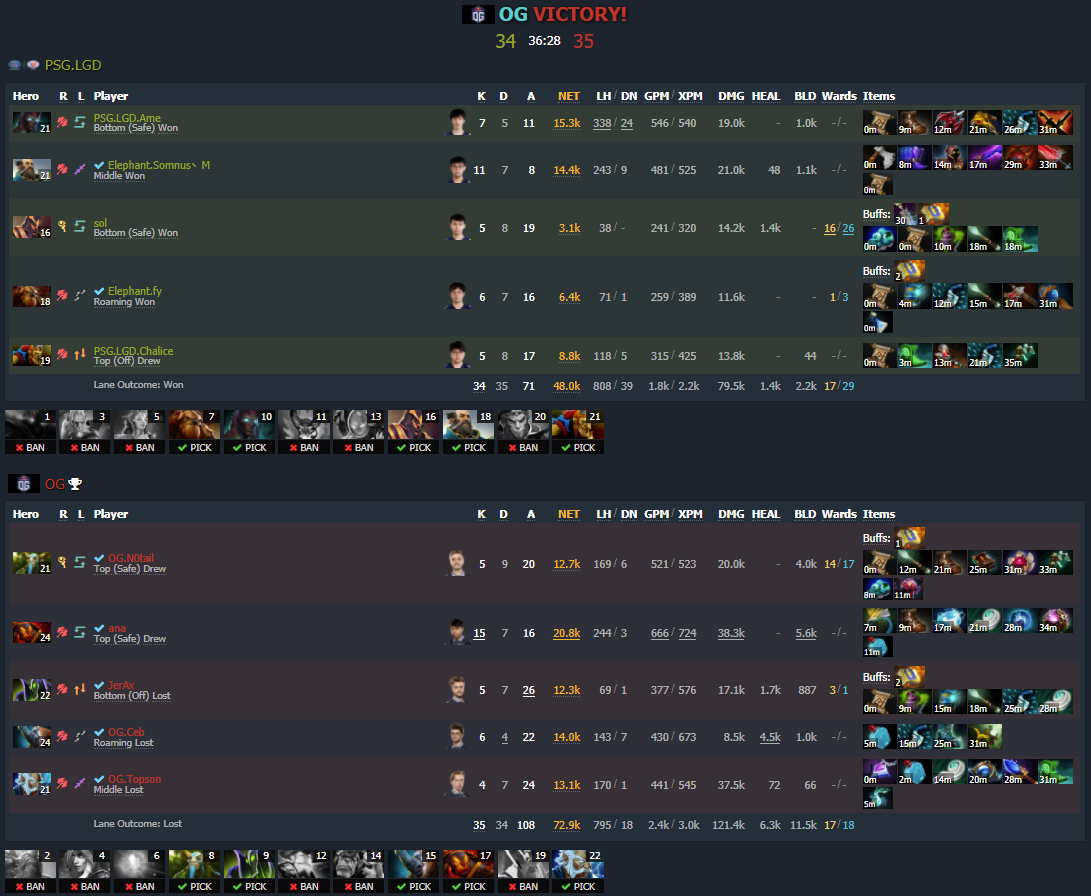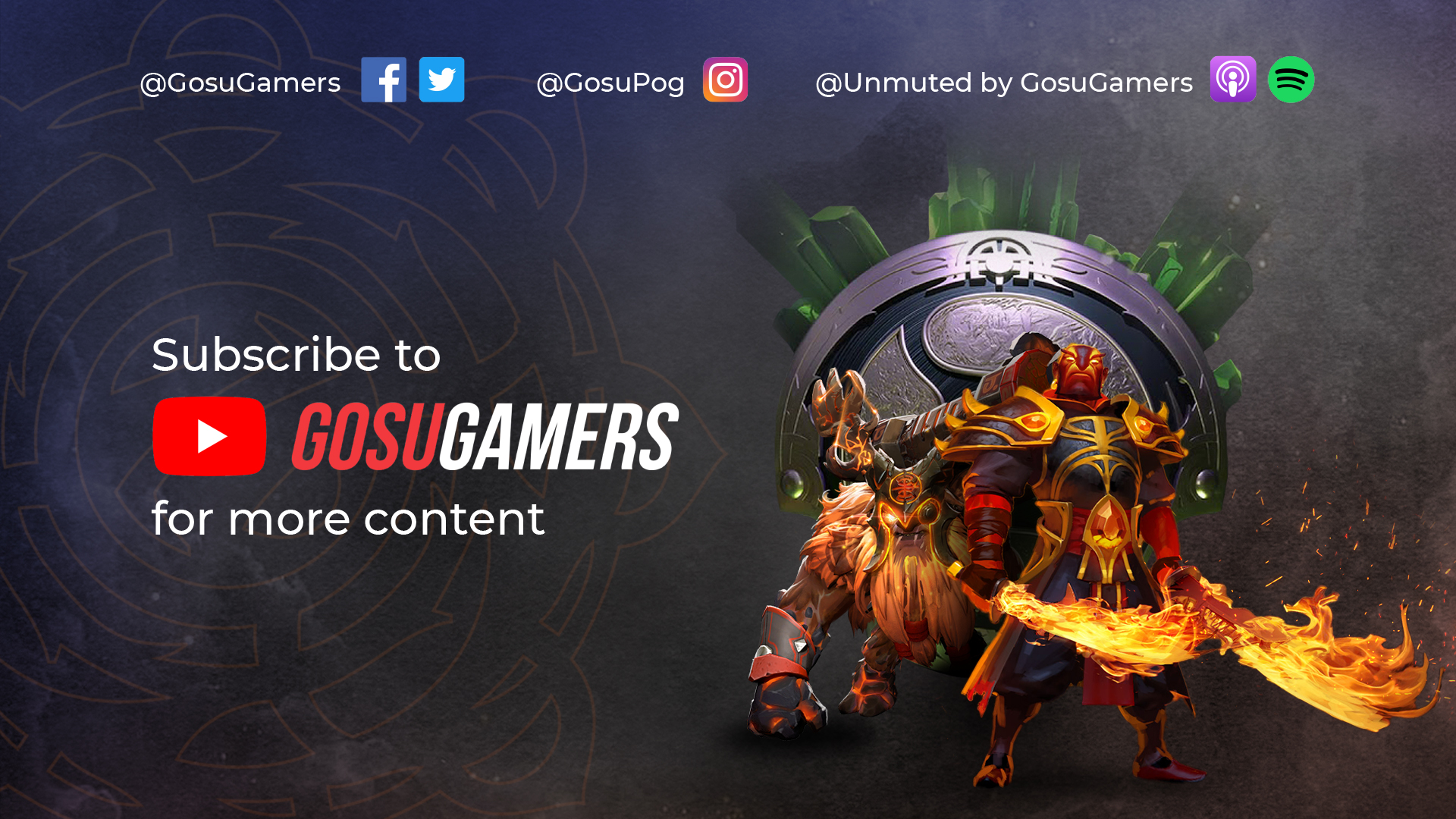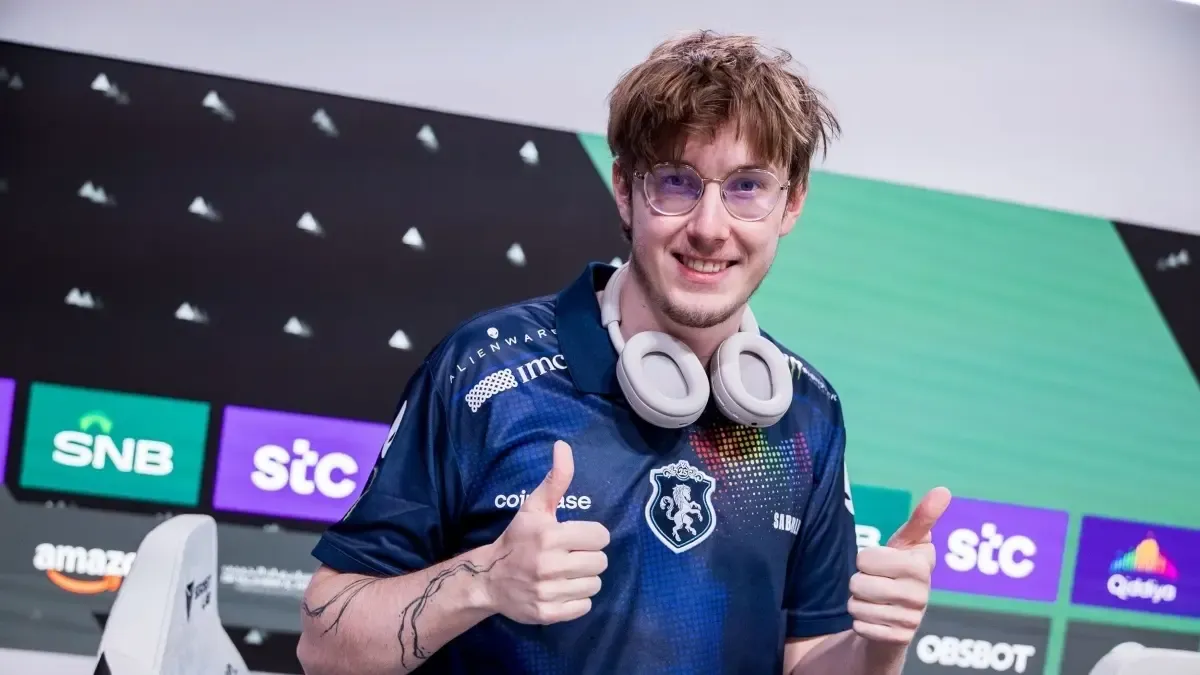During the weeks leading up to TI10, GosuGamers will be taking a closer look back at the meta for each of The Internationals through the years. This week is TI8.
We are towards the tail end of the journey to look at the metas which blessed the former versions of The International, and our penultimate stop is one of the craziest esports stories to ever have unfolded. The International 2018, or TI8, will be remembered for quite a few reasons, including the fact that it possibly had the best TI grand finals to date.
TI8 was held at the Rogers Arena in Vancouver, which was the first time it had travelled from Seattle since 2018. The prize pool for the tournament, thanks to the TI8 Battle Pass, had gone up to nearly $25.5 million from $24.8 million from the previous year. The winners of TI8 were destined to get the same percentage as the winners of TI7 – 44%, which came out to be a little over $11.2 million.
Format
The format for TI8 was pretty much the same as TI7. There were a total of 16 teams-
● 8 invited based on the Dota Pro Circuit (DPC) rankings
● 10 qualified (1 from EU, 1 from CIS, 2 from China, 2 from SEA, 3 from NA, 1 from SA)
The two groups had 9 teams each, with every team playing a best-of-2 against every other team in their group. The top four teams went to the upper bracket, while teams 5 to 8 went to the lower bracket. This was very similar to the format for TI7, was the same for TI9 and from the looks of it, will be carried over to TI10 (a total of 18 teams are travelling to Bucharest).
The three strongest teams going into TI8 were Virtus Pro, Team Liquid and PSG.LGD. The 2017-2018 Dota 2 season was the first year when the Dota Pro Circuit (DPC) had been launched, and there were a whole bunch of Majors and Minors, all third party events in which Valve contributed to the prize pool. Virtus Pro won four of the nine Majors, PSG.LGD won two, with Team Secret, Mineski and Team Liquid winning one a piece. But Team Liquid’s win came at the very end, in the China Dota 2 Supermajor, which was the last Major of the year and a prize pool and DPC point reward which were 1.5x the other Majors. Most would have predicted two of the three (VP, Liquid or PSG.LGD) to end up in the grand finals. As it turned out, only one of them did – PSG.LGD.
OG had an abysmal year. Not only had they failed to make it to most Majors, but two of their players also left just before the TI8 qualifiers, leaving the team in shambles. With a last minute team in place, they made it through the EU qualifiers for TI8, and everyone had them getting eliminated early on in the tournament. After a bad start to the group stages, the Green Dream came to life in days 3 and 4 of the group stages and just managed to secure an upper bracket place for themselves. The rest, as they say, is history. No one was able to take down OG in a series in their inspirational and unexpected run across the finish line. On the way to the grand final, they also pushed down their eventual opponents, PSG.LGD, to the lower bracket final to face off against Evil Geniuses.
Anathan “ana-” Pham
Topias Miikka “Topson” Taavitsainen
Sébastien “Ceb” Debs
Jesse “JerAx” Vainikka
Johan “N0tail” Sundstein
Wang “Ame” Chunyu
Yao “Somnus丶M” Lu
Shenyi “Chalice” Yang
Xu “fy” Linsen
Jian Wei “xNova-” Yap
General changes
Going from TI7 to TI8, Dota 2 went through a lot of patches. IceFrog and Valve introduced the ‘new patch every two weeks’ system, which led to the patches jumping from patch 7.06e for TI7 to patch 7.19 for TI8. Two new heroes were added to the game – Dar Willow and Pangolier, who also made it to Captain’s Mode for TI8. Let’s take a look at the general changes in that period that would have the biggest impact on the game.
● Middle lane no longer has an additional melee creep
● Denies XP granted to the enemy (the player being denied) reduced from 70% to 25%
● Denied XP gained by the denier reduced from 30% to 25%
● Removed Shrines from the base (replaced by filler buildings)
● Glyph now causes your creeps to be invulnerable for the glyph duration
● Third Roshan kill now drops a single-use consumable Refresher Shard (Cooldown is independent from Refresher Orb)
● Neutrals now sleep at night (They have zero aggro range while sleeping)
● Captains Mode now has an extra ban in the first phase (6 bans total in the mode)
● Removed the remaining Unique Attack Modifiers
▪ Lifesteal is no longer a Unique Attack Modifier (stacks additively)
▪ Arcane Orb is no longer a Unique Attack Modifier
▪ Mana Break is no longer a Unique Attack Modifier (does not stack with Diffusal Blade's Mana Break)
● Five New Items: Aeon Disk, Kaya, Meteor Hammer, Nullifier, and Spirit Vessel
● Roshan now has 25% Status Resistance
● Starting gold reduced from 625 to 600
● Killing a neutral camp stack now gives a bonus 25% gold bounty to the hero that stacked it. No bonus is given if the stack is cleared by an enemy or the hero that stacked it.
● Buyback cost changed from 100 + (Level × Level × 1.5) + (Time × 0.25) to 100 + NetWorth ÷ 13
● Buyback no longer reduces gold earned after respawning
● Glyph duration increased from 5 to 6
● Bounty Runes
▪ Now spawn every 5 minutes
▪ Now grants gold to each player (40 + 3/min)
▪ Now fully fills bottles
● Sentry Ward duration increased from 4 to 6 minutes
The meta that developed around patch 7.19 (starting from a few patches before it) was one where the laning stage was extremely important. In interviews I did with Notail, Neta “33” Shapira and Tal “Fly” Aizak at TI8, this is what they had to say about the meta-
Notail: I have preferred other metas to this one because I’m not a fan of the fact that laning decides so much of the game. The deny mechanic takes some of the fun away from the game. There are certain heroes that players want to play but can’t because they just cannot lane well. Back in the day, laning was a part of it, but what mattered more was how your lineup works together, how your lineup counters the opposition lineup.
33: Lanes are very important in this meta and the initiators just cannot win the lane. So instead, heroes like Weaver and Mirana are picked so you can win the lane. If you can get out of the laning phase in good shape, those heroes like Tide are really good. But most times, you will lose the lane with them and it is not worth it.
Fly: Very small things, like a single deny or a single misuse of a spell can change everything in the lane! So it is very skill based right now, which I think is cool.
A common theme can be seen from all three statements here – the laning stage was extremely important! One of the reasons that was the case was because when a creep was denied by a player, the enemy heroes only got 25% of the experience of the creep instead of the previous 70%. Denies had an extremely important part to play in the laning stage (more so than ever before) and if one team got the better of it, they came out a lot better from the laning stage and were able to take over the game.
With the laning stage having that kind of importance, teams started forgoing a lot of the traditional offlaners which typically can lose the lane, but make their presence felt in team fights later on in the game. Heroes like Weaver, Ursa and Wraith King, which were typically seen in the safelane, began making appearances in the offlane. It resulted in a TI meta like never before.
The ban and pick phases did change going from TI7 to TI8. The order for Captains Mode for TI8 has been shown below. The biggest change was the addition of a sixth ban, which was put in place in the first phase, making it three bans in the first phase, two in the second and one in the third. This made it quite difficult to get the strong picks through. But there were quite a few good heroes in the meta, which kept things interesting in the drafts.

A few things to take note of before we jump into the games-
● This was only the second ever TI grand final to go to five games after the TI3 grand final between Alliance and Na’Vi.
● In terms of length based on game times, this was the longest TI grand final.
● Spectre and Nature’s Prophet were banned in the first phase of four of the five games, which Tiny was banned in the first phase of all five games of the grand final.
● Except for game 4 which lasted nearly a little over 65 minutes, all the other four games finished between 34 and 39 minutes, which was indicative of the meta that had developed around Dota 2 patch 7.19.
● Teams either had Radiant or first pick in the first four games. In the fifth game, PSG.LGD had Radiant with first pick, which was a curious deviation.
All images of game details are taken from Dotabuff.
Game 1 (OG Radiant, PSG.LGD Dire with first pick)

The name of the game for OG was to get Spectre in ana’s hands. Irrespective of how bad they started the game, if ana’s Spectre hit critical mass, he had proven it to be a hero that could turn games. That was exactly what happened in game 1, with PSG.LGD taking the lead, but OG holding on and making a comeback on the back of the Spectre.
OG often played with offlaners like Treant Protector and Winter Wyvern for Ceb, which kept opponents guessing and gave them a slight upper edge in terms of the mysterious factor in what the hero would be prioritized to do. As a team which came into the tournament as the darkest of horses with no expectations, OG deviated from the meta and went for what they believed in multiple times.
Game 2 (PSG.LGD Radiant, OG Dire with first pick)

PSG.LGD leveled the series to 1-1 after winning game 2. In game 2, they got their hands on the Earthshaker, a hero which did very well at TI8 and the one that helped put PSG.LGD in the lower bracket final after an insane save by Jerax in game 3 of the upper bracket final between the two teams. Not surprisingly, it got banned out in games 3 and 4.
Game 3 (OG Radiant, PSG.LGD Dire with first pick)

Nothing too out of the ordinary sticks out in the games in terms of heroes and items. Ceb did play his position 3 Winter Wyvern in game 3, but PSG.LGD were ready for it. fy’s performance on the Phoenix in game 3 was out of the world, and was a testament to why he is hailed as a God. PSG.LGD took it comfortably on the back of a farmed Maybe Alchemist to take a 2-1 lead in the series.
PSG.LGD got their hands on Weaver, a hero who could be flexed in either of the side lanes. Expecting it to go in the offlane, OG wasted their last phase ban on a carry. That was an added benefit of the unorthodox offlaners of the TI8 meta.
Just in the first 3 games, 26 unique heroes were played! Only four heroes saw repeat picks, which shows how diverse the meta was.
Game 4 (PSG.LGD Radiant, OG Dire with first pick)

This can be hailed as a lot of things – game of the series, game of the tournament, the best game ever in the grand finals of a TI, game to have caused the biggest changes in blood pressure of the spectators..the list can go on. It was a game full of back and forth action, edge of the seat fights, buy backs, you name it. At a time when it seemed PSG.LGD would win it and take the Aegis back to China, which was the tradition for even iterations of The International, OG pulled off some of the most insane plays witnessed at TI8 to bring the series back to parity. The one that will stay in the minds of the Dota 2 community is Ceb’s clutch Berserker’s Call on Axe, which ODPixel immortalized with his casting.
In terms of meta related things, Ame went for a Diffusal Blade on Morphling because back then, somehow Phantom Lancer’s Juxtapose applied to Morphling’s Morphed form as well, so the plan was to play as the Phantom Lancer for a majority of the fights. Also because Morhphling back then had two completely separate HP and mana bars for his original and morphed form, it gave him an added advantage to play a majority of the fight as a different hero and morph back when he was low on HP and mana. OG however, picked the perfect counter to it in the form of Axe.

Game 5 (PSG.LGD Radiant with first pick, OG)

When OG started off their qualifiers journey, ana annihilated a lot of teams on the back of his Ember Spirit. But OG didn’t really pick the hero a lot in Vancouver. Bringing him back for the last game of the tournament was a fitting tribute.
In fact, all of OG’s heroes had a below average win rate in the tournament. But they knew what worked for them and they weren’t afraid to go against the meta and take the risk, even in game 5 of the TI grand finals!
The game started as a disaster for OG, with PSG.LGD getting off to a great start and getting an early net worth lead. But in OG fashion, on the back of some clutch team fights and buy backs, the Green Dream pulled it back and took the game to claim the Aegis. The pattern of TI winners alternating between the West and China had finally been broken.

Team GPMs
The team GPMs per game for the two teams throughout the series were:
OG: 2162
PSG.LGD: 2240
The GPMs for both teams were quite high, much like what we are used to seeing in today’s games. There was a steady rise in the average team GPMs throughout the years, and by TI8, it had hit the levels we are used to seeing.
With that, we come to the end of the deep dive into the grand finals of TI8, which was possibly the best one till date. Next week, we’ll take a look at the contest between OG and Team Liquid in the TI9 meta analysis, which was the year when the first player(s) and organization were finally able to claim a second Aegis.












